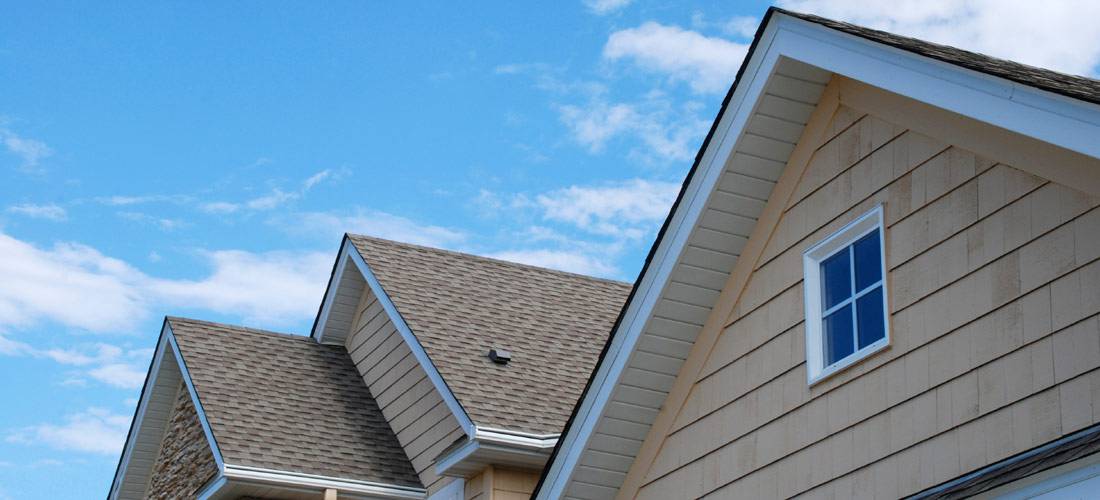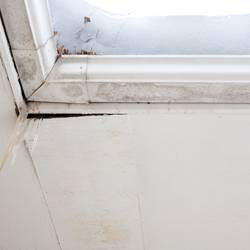Roof leaks are hard to find because it usually shows up far from where it originated.
If you want to find out if you have this kind of problem, follow Bruce Lee's advice – ‘Be like water’.
Water usually seeps in through worn, broken or missing shingles; along intersections of roof planes; where there are loose nails; through corroded roof flashing around vents; and, through poorly sealed roof flashing around chimneys or skylights.

Roof leaks often pass the roofing and travel down rafters, to the sheathing, or to the topside of ceilings. Most of the time, homeowners are oblivious to its occurrence not until it finds a place to drip down inside the house and onto your home appliance or furniture.
1. Finding the Source
 Look for signs of roof leaks during the day. Even if the weather has been dry for a while, you can still figure out where it started. If you have attic access, use a bright flashlight to find evidence of stains, discolorations or water marks along the framing members of the ceiling. Try switching off the light so you can see if there are holes through the roof.
Look for signs of roof leaks during the day. Even if the weather has been dry for a while, you can still figure out where it started. If you have attic access, use a bright flashlight to find evidence of stains, discolorations or water marks along the framing members of the ceiling. Try switching off the light so you can see if there are holes through the roof.
2. Testing for Roof Leaks
If it is difficult to ascertain where the roof leaks are coming from, you can do a water test. Ask a family member or a neighbor to go onto the roof with a garden hose, and another one to go inside the attic with a strong light and a bucket.
As the roof is being flooded with water, the person in the attic will carefully watch the eaves while slowly working uproof until water from the leaks appears. If the source of the leak is found, push a nail up through the hole so it can be marked later for repair.
3. Making an Emergency Leak Cover
 Using plastic sheeting and 2-by-4 wooden boards, make an emergency leak cover by following these steps:
Using plastic sheeting and 2-by-4 wooden boards, make an emergency leak cover by following these steps:
Cover the section where there are leaks with enough polyethylene sheeting. Add several feet extra to make sure that it is securely covered from eaves to peak. Nail a pair of 2-by-4 wooden boards to wrap one end and another pair to sandwich the assembly.
To ensure that the wind will not carry it away, use another pair of boards to sandwich the top end of the sheeting but do not nail this part to the roof.
4. Temporary Fix for a Roof Leak
Roof leaks caused by holes can be fixed using a sheet metal flashing (a galvanized 12-by-12-inch one) to be slipped up under the course above the hole.
To cover the hole, push the sheet metal flashing up underneath the damager shingle. Reinforce this temporary cover using two or more roofing nails which will allow the water to shed over the metal instead of inside the roof.
5. DIY Roof Repair
 Unless your roof’s pitch is not too steep, managing your DIY roof repair can be difficult and dangerous. Besides, if you don’t have the necessary experience and confidence to get the job safely, it is recommended to call a professional instead.
Unless your roof’s pitch is not too steep, managing your DIY roof repair can be difficult and dangerous. Besides, if you don’t have the necessary experience and confidence to get the job safely, it is recommended to call a professional instead.
If you will get involved in a DIY project like fixing roof leaks, you should have the necessary tools ready to save time and frustration. These include a hammer, caulk gun, flashlight, cordless drill or driver and such. As for the materials, make sure you have the following ready: roofing and siding caulk, metal flashing, roofing vents and nails, plumbing boots, etc.
Whether it is an old roof or a new installation, wear and tear is unavoidable. But roof leaks are a different story. With the right home maintenance, you can have your roof always ready to keep your household warm and dry for decades.













Write a Comment